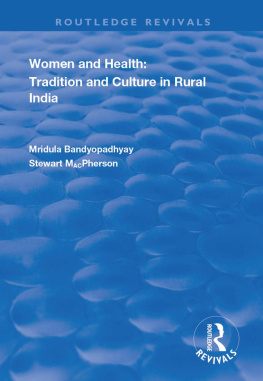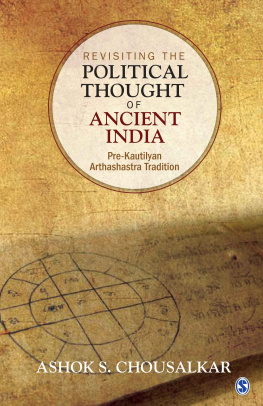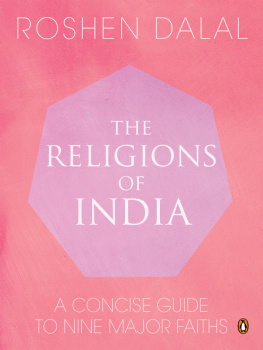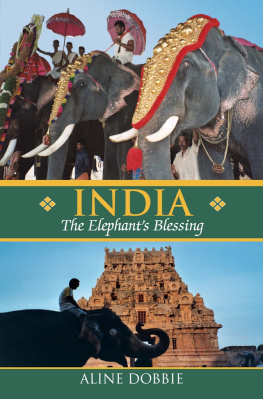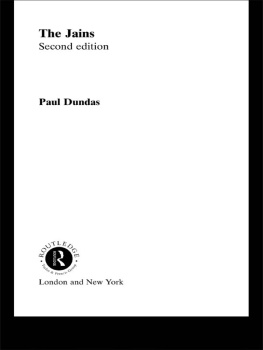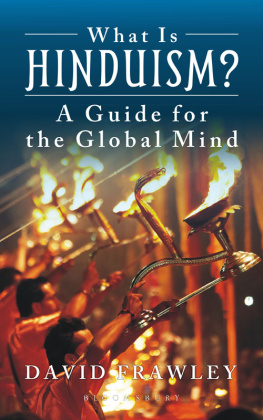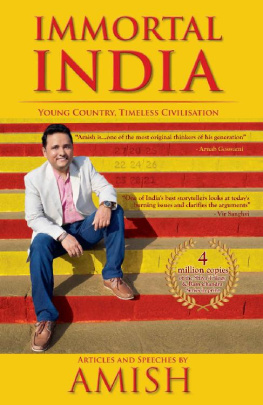BLOOMSBURY INDIA
Bloomsbury Publishing India Pvt. Ltd
Second Floor, LSC Building No. 4, DDA Complex, Pocket C 6 & 7,
Vasant Kunj, New Delhi 110070
BLOOMSBURY, BLOOMSBURY PRIME and the Diana logo are trademarks of Bloomsbury Publishing Plc
First published in 2019
Copyright Veenus Jain, 2019
Veenus Jain has asserted her right under the Indian Copyright Act to be identified as the Author of this work
All rights reserved. No part of this publication may be reproduced or transmitted in any form or by any means, electronic or mechanical, including photocopying, recording, or any information storage or retrieval system, without prior permission in writing from the publishers
Bloomsbury Publishing Plc does not have any control over, or responsibility for, any third-party websites referred to or in this book. All internet addresses given in this book were correct at the time of going to press. The author and publisher regret any inconvenience caused if addresses have changed or sites have ceased to exist, but can accept no responsibility for any such changes
ISBN: 978-93-90358-99-1
2 4 6 8 10 9 7 5 3 1
Typeset by Fortune Graphics, New Delhi
Printed and bound in India by Replika Press Pvt Ltd
To find out more about our authors and books visit
www.bloomsbury.com and sign up for our newsletters
Dedicated to my father
Late Shri Raj Kumar Jain
Contents
Foreword
Preface
Acknowledgements
1. Introduction
2. Historical Survey
3. Ceremonies
4. Organisation, Functions and Activities
5. Devadasi: Her Parmour and Status
6. The Sexual Angel
7. Prevention, Reforms and Their Effectiveness
8. Interviews
9. Tradition or Travesty
Bibliographical Notes
The book Devadasis of India Tradition or Travesty is a study of the Devadasis from the historical perspective.
The tradition of Devadasis has been discussed in various research works but yet many of its aspects are still a puzzle to the scholars. One such aspect is the origin of the system. Some scholars go back to the Jogimara Cave inscription of 3rd Century. B.C. and opine hastily that Sutanuka was a devadasi since she is referred to by this name. The famous scholar K.P. Jayaswal disagreed with this interpretation on the basis of language and context and interprets the word Devadasi as a servant of the monastery. She could be a dasi in the service of a religious institution and not a devadasi in the later sense which had become a social tradition in which the woman was supposed to dedicate her services to the deity and was denied marriage since she was supposed to be married to the God. This is the reason why Kautilya mentions all the rules in connection with prostitutes but does not use the word devadasi.
Similarly when Kalidasa refers to dancing girls present in the Mahakala Temple of Ujjayeni at the time of evening worship (Meghaduta 1.35) it simply meant that the service of singing and dancing girls or prostitutes was utilized in the dance ritual since the practice of performing song and dance before the deity was common from very early times. The early Puranas do not mention this. As regards the Padma Purana and Bhavisyat Purana which mention the tradition, it should not be forgotten that their different passages were compiled in different times. The contemporary smritis like N rada Smriti and Brihaspati Smriti also do not mention them.
From the 9th Century CE we find several inscriptions of South which mention this tradition. These were the times when the temples were not only the expressions of bhakti but also reflected the glory and prosperity of the patron king also. The model in kings Court was taken as the model of Gods Court too. Rajaraja in 10th Century CE provided the temple service of 400 dancing girls along with pieces of land for their maintenance in the temple at Tanjuvur. But this practice was also criticized in the society as referred to by Alberuni.
In addition to taking care of the temple and its rituals the devadasis were trained into the dance traditions like Bharatnatyam and Odissi. A rich development of classical dance and music emerged from this.
But as this institution was divested of the vision by which it had emerged and was beset with the exploitation of women, the result was the Devadasi Abolition Bill in 9th October 1947 enacted by Madras Presidency.
Since there are many unexplained areas regarding the Devadasi tradition which we glean from ancient literature, I hope that the book would inspire further research by academicians on this theme.
The book would be interesting to the scholars as well as the general readers. I wish Dr. Veenus Jain success in her endeavour.
18th January 2019
Prof. Susmita Pande
Chairperson
National Monuments Authority
New Delhi
In order to evaluate the kind of knowledge offered in these pages it is necessary to reflect on the simple question Why did I choose to work on the system of devadasis in India? To answer this question I will have to go back in the memory lane: When I was in Srinagar (Kashmir) in the National Integration Camp I became aware of the Indian Cultural Heritage and especially of the part played by women. Every day was celebrated as a state day as Assam Day, Bihar Day, Haryana Day and so on. In these celebrations the culture of one particular state was depicted which revealed to me the great role women play in religion and culture. At that time I was quite young studying in class IX, but there and then I decided to devote myself to womens study. This inclination towards the role played by women in religion and culture led me to make an in-depth study revolving around women, religion and culture.
When I discussed my interest with Dr. Madhu Gupta (Head of the Department. of History, S.D. College, Muzaffar Nagar, U.P.), she suggested to study the age-old institution of Devadasis.
This work began as a study of the dancers attached to the temples. These women are generally referred to by the term devadasi which literally means female servant of the deity. This work bears on many topics such as origin, belief, development, ceremonies, organisation, functions, activities, paramours, sexuality, historical survey, statistical analysis, preventive measures and the pathetic stories of devadasis. Because it was conceived as a study of women, culture and religion, it must be borne in mind that all these concerns are dealt with as they arise out of a close attention to the practices of the devadasis.
Every piece of academic work of this proportion has to be a collective enterprise, hence I express my gratitude to a number of individuals and institutions, who contributed in completing my work giving it its present shape. My especial thanks are due to Prof (Dr) S C Mittal (President, Akhil Bhartiya Itihas Sankalan Yojna) who became a source of inspiration for writing and from whom I continue to receive intellectual as well as spiritual guidance. I am greatly thankful to Prof (Dr) Sushmita Pande (Chairperson, National Monument Authority) for her encouragement and constructive criticism.


